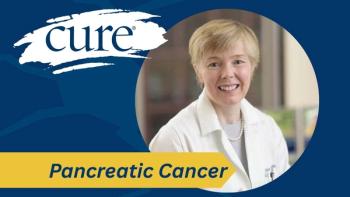
Long-Term Data Show Optune Offers a Survival Benefit in Glioblastoma
Long-term data from the phase 3 EF-14 study showed that Optune plus temozolomide had a survival benefit compared to temozolomide alone.
Adding Optune to temozolomide improved overall survival (OS) by more than four months compared to temozolomide alone for patients with newly diagnosed glioblastoma multiforme (GBM), according to updated findings from the phase 3 EF-14 study.
The findings confirmed the survival benefit observed at the study’s interim analysis, which led to the October 2015 FDA approval of the Optune combination for use in patients with newly diagnosed GBM following surgery, chemotherapy and radiation therapy.
“[Optune] should be considered the new standard of care,” lead study author Roger Stupp, M.D., of the University of Zurich Switzerland, said when presenting the findings at the 2016 Society for Neuro-Oncology Annual Meeting. “The magnitude of benefit is similar to what we saw when we added temozolomide as standard of care.”
Optune is a portable, noninvasive, battery-operated device that attaches directly to the patient’s head to deliver tumor-treating fields to the brain. The device is thought to slow or reverse tumor growth by inhibiting mitosis during metaphase, anaphase and telophase.
The phase 3 EF-14 study randomized 695 patients after they had already received standard temozolomide and radiation therapy (about four months after initial diagnosis). A total of 466 patients were randomized to receive Optune and temozolomide and 229 received temozolomide alone.
The two treatment arms were well balanced. Among patients with available tissue, over 80 percent had the MGMT mutation and over 50 percent had the IDH1 mutation.
The patients in the Optune arm received a median of 8.2 cycles of treatment, where a cycle was one month, and a median of six cycles of temozolomide. Adherence to Optune was 75 percent. The patients in the temozolomide-alone arm received a median of five cycles.
Median OS was 20.8 months in the Optune arm and 16.0 months in the temozolomide-alone arm. The hazard ratio of 0.65 favored the Optune arm. The two-year OS was 42.5 percent in the Optune arm and 30 percent in the temozolomide arm. From diagnosis, patient survival was 24.5 months in the Optune arm and 19.8 months in the temozolomide arm.
Median progression-free survival (PFS) was 6.7 months in the Optune arm and four months in the temozolomide arm. The hazard ratio for PFS of 0.63 again favored the Optune arm. From diagnosis, median PFS was 11.2 months in the Optune arm and 7.8 months in the temozolomide arm.
“The two-year annual survival rate is meaningful, and [Optune] resulted in a 30 percent absolute increase in survival. We are getting to something that is at least meaningful to patients and their families in terms of longer time to be together,” said Stupp. Further, survival benefit in terms of annual survival rates occurred at 1 year (72.6 percent in Optune arm vs 65.3 percent in temozolomide arm), at two years (42.5 percent vs 30.0 percent), at three years (23.5 percent vs 15.9 percent) and at four years (17.3 percent vs 10.4 percent).
Cox proportional hazard ratios for OS found MGMT status was the strongest predictor for benefit. Hazard ratios favored TTF across treatment, gender, MGMT status, age, Karnofsky performance status (KPS), and tumor location. Likewise, subgroup analyses indicated benefits for all subgroups. The subgroups analyzed included MGMT methylated vs unmethylated; resection by biopsy, partial, or gross total; age under 50 years or 50 years or older; KPS 90-100 or 80 or below; and gender.
In both study arms, 9 percent of patients experienced grade 3 blood and lymphatic system disorders, while grade 4 disorders were experienced by 4 percent in the Optune arm and by 2 percent in the temozolomide alone arm. Convulsions of grade 3 affected 3 percent of patients in both arms, with 1 percent of the patients in the Optune arm affected by grade 4 convulsions. In the Optune arm, about half the patients experienced some skin reaction from the treatment device.
“The long-term analysis further supports our data showing that Optune together with temozolomide is a better treatment option for newly diagnosed GBM patients compared to temozolomide alone,” Asaf Danziger, CEO of Novocure, the developer of Optune, said in a statement. “We believe these results will give healthcare providers further confidence in our therapy and transform the standard of care in newly diagnosed GBM. Our priority is to improve the lives of GBM patients, and we believe these results will help us to accomplish our mission.”





